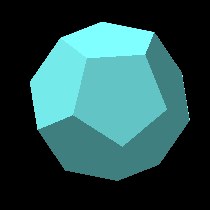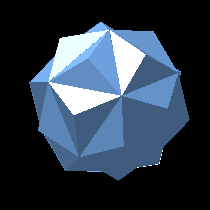
|
The first stellation is the triakis icosahedron.
The edges of the triangular faces of the icosahedron are still visible.
At each original face, extending the planes of the surrounding faces
has raised a small pyramid. The resulting new faces are irregular
hexagons (one is brightly lit in the picture). |
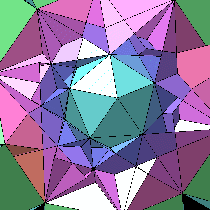
|
Further extension of the original icosahedron's
face planes encloses a series of different shaped volumes. Here, as the
icosahedron rotates, the facets of these stellated volumes appear and
disappear so that we can see the structure. Glimpses of all the
icosahedral stellations can be seen. |
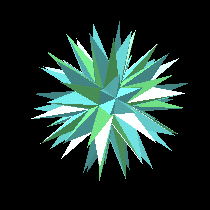
|
Choosing to add all the possible enclosed
volumes leads to the final stellation of the icosahedron; a star with
60 sharp points arranged in clusters of 5. |
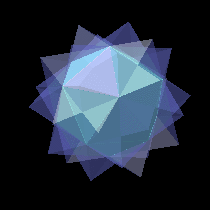
|
Intermediate stellations include some regular forms. For example, the compound of five octahedra:
the 20 faces of the icosahedron extend into 8 faces of each of 5
octahedra. Each icosahedron face generates two faces of distinct
octahedra. Here, the stellation is semi-transparent so that we can see
the icosahedron forming the five octahedra. |
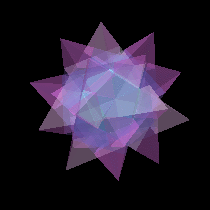 |
Similarly, adding some further-out carefully selected volumes forms the compound of five tetrahedra. Now each icosahedron face generates only one tetrahedron face. |
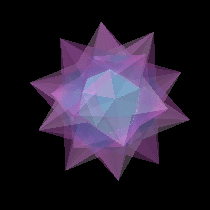 |
The five tetrahedra above can be selected in two
enantiomorphous (mirror reflection) forms. Combining both forms by
selecting more stellation volumes leads to the compound of ten tetrahedra. Now each icosahedron face generates two faces of distinct tetrahedra. |
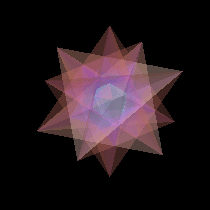 |
The remaining regular stellation is the great icosahedron.
Each of the original icosahedron faces has been extended into a much
larger equilateral triangle. The resulting solid still has 20 faces
with the same icosahedral symmetry, but they intersect and five meet at
each vertex rather than three. |
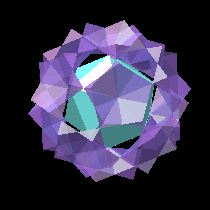 |
The criteria of Coxeter et al for selecting volumes to
give distinct stellations lead to some unexpected results. For example,
can the mauve volumes here be considered a polyhedron? They are made up
of 60 small volumes which are joined only at edges and vertices. The
original icosahedron has been included to show how its face planes form
the volumes. |
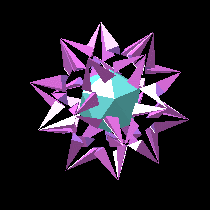
|
Even more surprisingly, here is a stellation in
which 60 small volumes meet only at their vertices. Again, the original
icosahedron has been included.
|
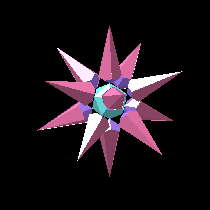 |
Finally, this stellation consists of 12 unconnected volumes! Again, the original icosahedron has been included. |
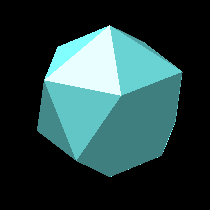
|
Many other configurations of the elementary volumes are
possible, retaining the icosahedral symmetry. In this animation,
successive volumes are added, passing through a number of stellations
until the final stellation is reached. The sequence starts with the
triakis icosahedron and the compound of five octahedra, and passes through the compounds of of five tetrahedra and ten tetrahedra and the great icosahedron. Other sequences are possible. |






















